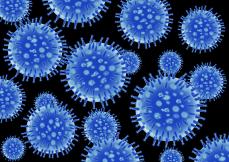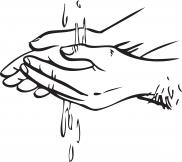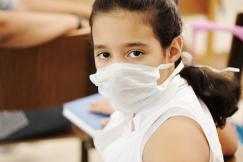
(With special thanks to volunteers in Washington, DC, Maryland, Virginia [the DMV area] from the Muslim Mask Project, who worked out the logistics and determined what works well)
Why is this needed?
Several health maintenance facilities are facing shortages in supplies. There are many kinds of masks used in the healthcare industry. The simplest is the surgical mask which provides the lowest level of protection and is worn by people who may have symptoms of flu.
It has been estimated that the country will need about 3.5 billion face masks in the fight against the coronavirus. Manufacturers do not have the capacity to supply the world’s needs in time. The Centers for Disease Control and Prevention (CDC) has asked that in the absence of surgical masks, hospital staff should use scarves. By putting our skills to the use of the larger community, we can fill the need for masks with very little work, and provide a higher level of protection to our (s)heroes.
Who will accept homemade masks?
Smaller clinics, regional hospitals, and elderly care centers will be more willing to accept homemade masks. In some areas, as numbers of Covid-19 patients are going up, even larger hospitals are willing to do so. Often, the secondary staff have less access to masks than the doctors do at this time.
Several hospitals/clinics are accepting masks, including many hospitals/clinics in the New York and Washington-DC areas. Other hospitals include Unity Point in Iowa and Dartmouth-Hitchcock Medical Center in New Hampshire.
How do you determine the need in your area?
Ask. The best way is to connect with some of your doctor and nurse friends. Ask them if their facilities need masks. Or ask them if they can give you a number to call. The Director of Nursing or Facilities Manager are good points of contact at the hospital. Alternatively, make some calls to hospitals and clinics in your area.
Calling Clinics:
Call the main number. Explain why you are calling and ask for the Director of Nursing or the Facilities Manager if needed. Speak using the following suggested script:
“Hello, I'm calling to ask if your clinic/hospital can accept face masks that we can have had volunteers make. We can make both the filter insert mask or filterless face mask, whichever you prefer”
Questions to ask:
-
Do you prefer a mask with an insertable filter or without?
-
Can you sterilize the masks we send you?
(If no, say that you can sterilize using wash and dry at high heat)
-
Do you want us to pack each mask in its own plastic zip-bag?
How can our community help?
It’s a fairly simple task to make a surgical mask, but there are certain requirements for them which clinics would want. If you can get a set number of volunteers to make the masks and handle some logistics, the shortages can be mitigated to a good extent.
Types of masks you can make:
The masks that can be made at home are of two types
-
Simple surgical mask, made from two cotton cloth layers.
-
A higher efficiency mask made using cotton cloth, and which can have a paper filter insert.
Sterilization:
Masks made will need to be sterilized. In some cases, a clinic may have a UV unit, and the clinic will sterilize the masks. In other cases, you will have to sterilize at home. Make sure that you ask the clinic if they have a sterilizer available. The method to sterilize is described later in this article.
Sanitization of work area:
Before you make any masks, you need to follow strict sanitary conditions. Wipe your work area with sanitizer solution such as mild bleach (1/3 cup bleach in 1 gallon water). Wash hands, wear a mask (make the first mask for yourself). Do not swap masks with other people. Wear gloves. Please do not drink tea/coffee/water etc. in your workspace. Keep it clear.
Let's get down to making masks already!
Equipment needed:
- Sewing machines
- Thread and all that's needed for normal sewing.
- Scissors
- If using nose wire then wire cutter, plier etc.
- Hair ties\
- Single & double-sided adhesive tapes
- Gloves
- Mask for yourself
Routes to take:
Joann Fabrics pickup and drop off (Easiest)
In many areas, Joann Fabric and Craft Stores are supplying material, some even pre-cut, for making masks. You take the material, sew it to a supplied design, and return it to Joann. They will deliver to a hospital/clinic. This is an easy route if available in your area. Contact the Joann fabric store near you to see if this is a possibility.
Reference for sewing: https://www.youtube.com/watch?v=VgHrnS6n4iA&feature=emb_logo
Making masks from scratch
The masks will be cut from a template on 100% cotton cloth, sewn to a chosen design (see below), cleaned, packed, and delivered.
Materials purchase sources:
Cloth, elastic, tie-cord (shoelace or beading cord etc.):
100% cotton tight weave preshrunk cloth can be purchased from Joann Fabrics and other fabric stores in your area. You can also use good quality bed sheets, hotel napkins etc. Remnants are sometimes available at a good price. Buy an elastic band or tie cord, a shoelace type cord, or a bead cord to secure the mask onto the worker’s face.
Filter materials:
Furnace filters: Use pleated paper and electrostatic material filters meant for furnaces and air conditioning systems. Good makes are from 3M Filtrete, Honeywell, Arm & Hammer. DO NOT use blown fiberglass or any infused chemical filters such as carbon-infused ones. Also DO NOT use commercial air conditioning filters since they are very tight weave and hard to breathe through.
Vacuum cleaner paper filter bags: Use the bag type, not the cup type replacement filters. Usually, these are available for Singer, Hoover, Eureka, Meile and other vacuum models. Hepa filters are transitional layered. If you use Hepa, make a mark to indicate placement by writing a small but noticeable “out” with a marker.
Unbleached coffee filters can be used or tea filter material, but are not as effective.
These are easily available at hardware stores, Lowes, Home Depot, Walmart etc.
Amazon has increased delivery capacity and you can buy fabric as well as filter materials from Amazon for home delivery. Search for “cotton quilting fabric” or “paper filter material”
How to make a mask:
Please use 100% cotton and elastic ties. If you don’t have elastic, use cotton ribbon instead. Use a ribbon long enough to tie behind the head with room to spare. It must be:
- 100% cotton cloth
- Tightly woven
- Pre shrunk
- Newly or freshly washed
If you have some cloth at home and wish to use it, make sure to wash it before use.
Ties or elastic? Which is better?
Ties, instead of elastic, make the masks work for a larger range of users, but take longer to make. Perhaps using washable ribbon or maybe seam binding would be quicker and just as functional.
Tip from a sew-er: “For ties, I cut two 1 1/2" strips the width of the fabric, cut each of them in half (so you have 4 strips 1 1/2" x about 20") then turn under and press about 1/3 of the strip along each long side, then fold in half lengthwise, so the two folded-under edges meet, and then top stitch along that edge. Stick the non-selvage inside the mask's seam when stitching it in place, and then the neater selvage end is the finished end. It's kinda' down-and-dirty tie-making, not heirloom quality, but these are meant for use, not for show.
Now, choose the type of mask you will make. We recommend the filter mask pattern 1, Olson design comes from a hospital and is highly recommended. It can take filters, but can be used without filters also.
FILTER POCKET MASKS:
If you use this design, and you have filters, do not place them inside the mask. Send them separately. If you do not have filters, it's okay, just send the mask and the clinic will supply the filters.
PATTERN 1: The Olson Mask (Recommended)
Pattern cutout and sewing instructions:
https://www.unitypoint.org/filesimages/COVID-19/UnityPointHealth-OlsonMask-Instructions.pdf
Video tutorial:
https://www.youtube.com/watch?time_continue=149&v=8mIYAONFbz8&feature=emb_logo
Filters:
If you bought filter material, measure filter pouch and form, and cut filter material to size. For each mask, cut 3 filters at minimum. Do not insert into masks to allow masks to be sterilized.
(See pattern 3 to modify this design if possible to add a nose wire to it.)
SIMPLE MASKS: No filter pocket
PATTERN 2 No Nose Wire:
FreeSewing.org face-mask pattern with instructions (PDF and video). Different sizes are included.
Tip: use more than the recommended 4 feet of ribbon for the ties
https://freesewing.org/blog/facemask-frenzy/
PATTERN 3 With Nose Wire:
https://www.instructables.com/id/DIY-Cloth-Face-Mask/
With this variation, you can add the wire to the Olson mask to better its fit.
Sterilization:
If the receiving facility can sterilize your masks, skip this. If they cannot, follow the steps below:
1) Wear gloves for each step of this process
2) Wash at sterilize setting in your washer or the hottest water setting
3) Transfer masks to dryer, dry at high heat setting
4) Open a new packet of zip-bags.
5) Place each mask in its own bag
At this point, check: Do you have paper filter inserts that you cut from vacuum cleaner bags or furnace filters? If yes, do steps 6,7,8. If not, go to step 9.
6) Place filters in dryer and run cycle 15 to 20 minutes at high heat
7) Place 3 filters in a zip-bag.
8) Pair mask bags and filter bags
9) Print a sheet stating that the masks are individually cleaned using a washer/dryer and individually packed.
10) Deliver the masks yourself or through a delivery coordinator.
Coordinating with other areas in the U.S.:
Some areas may have a low need for masks in local hospitals. Please use our form to register so that our national coordinator can connect with you to fill the need in other areas.
Scaling up with volunteers:
We have a sample form to ask for volunteers. We can give you this template to make a volunteer form of your own. Pictures appear later in this document.
Volunteer roles needed may include:
- Coordinator (talks to clinics, distributes sewing work)
- Delivery coordinators (if you need someone to buy/deliver material to sewing volunteers)
- Cutters + Sew-ers
As you get larger, create a local whatsApp group with your team members for mask making/delivery/etc messages
Click Here to Volunteer








Add new comment